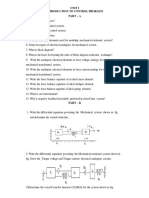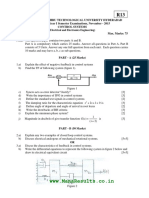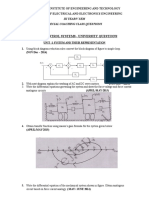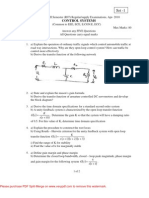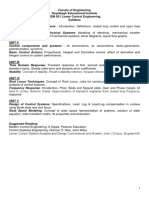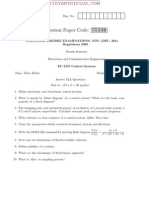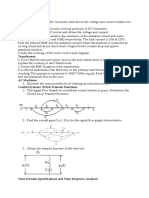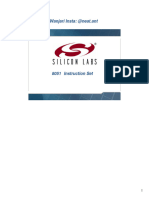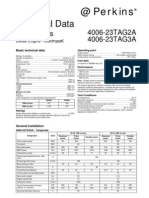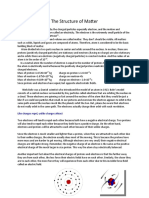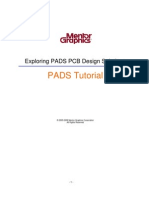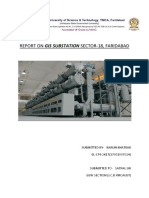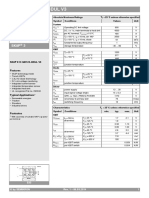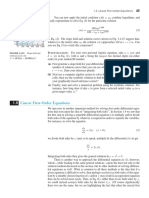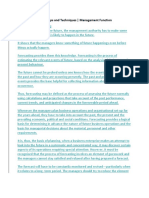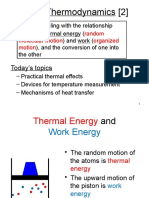0% found this document useful (0 votes)
76 views7 pagesCse Imp
This document contains 53 questions related to control systems. The questions cover a range of topics including: [1] types of control systems and their steady state error equations; [2] stability analysis methods like Routh's criterion; [3] time domain and frequency domain analysis of second order systems; [4] definitions of terms like gain margin, phase margin, bandwidth; [5] root locus analysis; [6] Nyquist stability criterion; [7] state space models; [8] frequency response; [9] modeling of systems like DC motors. The questions are intended for students in the 5th semester of the Electrical Engineering department at Noble Group of Institutions in Junagadh, India.
Uploaded by
darshansabhani555Copyright
© © All Rights Reserved
We take content rights seriously. If you suspect this is your content, claim it here.
Available Formats
Download as PDF, TXT or read online on Scribd
0% found this document useful (0 votes)
76 views7 pagesCse Imp
This document contains 53 questions related to control systems. The questions cover a range of topics including: [1] types of control systems and their steady state error equations; [2] stability analysis methods like Routh's criterion; [3] time domain and frequency domain analysis of second order systems; [4] definitions of terms like gain margin, phase margin, bandwidth; [5] root locus analysis; [6] Nyquist stability criterion; [7] state space models; [8] frequency response; [9] modeling of systems like DC motors. The questions are intended for students in the 5th semester of the Electrical Engineering department at Noble Group of Institutions in Junagadh, India.
Uploaded by
darshansabhani555Copyright
© © All Rights Reserved
We take content rights seriously. If you suspect this is your content, claim it here.
Available Formats
Download as PDF, TXT or read online on Scribd
/ 7





